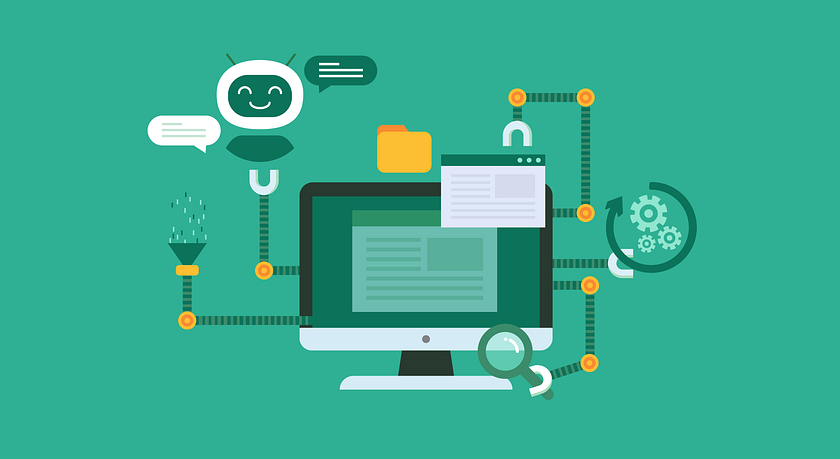Customer Service Automation: A Complete Guide [2025]

Customer service has transformed dramatically over the past decade. We’ve moved from clunky, scripted chatbots to intelligent AI systems that can handle even complex queries with speed and precision.
Now that we’re in 2025, it’s no longer just about saving costs through automation — it’s about delivering better, more personalized experiences at scale. According to Gartner, by 2029, AI will resolve 80% of routine customer service issues on its own, potentially slashing operational costs by 30%.
That’s a game-changer. By automating repetitive tasks, businesses can respond faster, maintain consistent quality, and free up their human teams to focus on high-value, empathetic interactions. This combination improves customer satisfaction and creates a more efficient support system overall.
From Simple Chatbots to Intelligent Agents: The Evolution of Automation
Remember those early chatbots that could only answer FAQs? We’ve come a long way. Today’s AI tools understand not just what customers say, but what they mean. They recognize tone, intent, even emotion — and they can respond accordingly.
With technologies like natural language processing (NLP), machine learning (ML), robotic process automation (RPA), and predictive analytics, modern customer service systems can now offer personalized, intelligent support across every channel. It’s no longer just about providing answers; it’s about having meaningful conversations.
Why Automation Matters More Than Ever
🚀 24/7 Availability
Automation never sleeps. No matter the time zone, customers can get the help they need instantly. This round-the-clock support meets the expectations of today’s always-connected customer.
🔁 Consistency at Scale
Every customer gets the same high-quality service — no off days, no mood swings. Automation removes the risk of human inconsistency and ensures brand reliability in every interaction.
💸 Big Savings, Bigger Value
While setting up automation takes some investment, the long-term savings are significant. A 2024 Accenture study found that 74% of companies met or exceeded their cost-cutting goals with AI and automation.
⚡ Faster Responses
AI tools reply in seconds — sometimes milliseconds. That means shorter wait times, faster resolutions, and happier customers.
📈 Effortless Scalability
During busy seasons or sudden spikes in inquiries, automation easily handles the load — no need to hire extra staff or make customers wait.
Breaking Down the Tools: What’s Powering Automation Today?
- AI Chatbots & Virtual Assistants: No longer basic — they hold real conversations, remember context, and adjust their tone to match the situation.
- Smart IVR Systems: Say goodbye to “press 1 for this” menus. These systems understand natural speech and route calls intelligently.
- Email Automation: AI sorts, replies, and escalates emails based on urgency and topic — saving hours of manual work.
- Self-Service Portals: These are smarter too. They suggest helpful articles, guide customers through issues, and get better over time.
- Workflow Automation: Behind the scenes, automation handles routing, ticketing, and more — so your team can focus on solving problems, not organizing them.
Getting Automation Right: Strategies That Work
✅ Start Small, Start Smart
Begin with high-volume, low-complexity queries — like order tracking, password resets, or common troubleshooting steps.
🔗 Integrate Everything
Your automation should be connected to your CRM, order systems, and knowledge bases. This ensures customers get accurate, relevant answers every time.
🤝 Seamless Handoffs
Sometimes, customers need a human. Make sure transitions from AI to agent are smooth and include context, so they don’t have to repeat themselves.
🔄 Keep Learning
Use feedback and data to constantly improve your automation systems. Analyze what works and where customers get stuck.
What’s New in 2025: Tech Trends to Watch
💡 Generative AI
Large language models make conversations more human-like, better at understanding nuance, and more useful for agents as copilots.
🔮 Predictive Support
AI now spots patterns to solve problems before customers even contact support — turning reactive service into proactive engagement.
🌐 Omnichannel Harmony
No matter where a conversation starts — Instagram DM, email, or web chat — it continues seamlessly. Customers get one consistent experience across platforms.
❤️ Emotional Intelligence
AI is learning to recognize frustration, joy, or confusion, and respond empathetically — or hand off to a human when needed.
Best Practices for Automation That Truly Works
- Keep Humans in the Loop: Automation should support, not replace, your team. Use agents for complex or sensitive issues.
- Personalize at Scale: Reference customer history, acknowledge loyalty, and tailor responses for a more human feel.
- Be Transparent: Let customers know when they’re talking to a bot. Honest communication builds trust.
- Track Performance: Measure resolution rates, customer satisfaction, and handoff frequency. Use the data to refine your strategy.
How to Measure Success
True success in customer service automation goes beyond just numbers. Look at:
- First contact resolution rate
- Average handling time
- Customer satisfaction (CSAT)
- Percentage of issues resolved without human help
Don’t forget qualitative feedback — surveys and sentiment analysis can reveal gaps that numbers might miss.
[24]7.ai: Redefining the Customer Experience
At [24]7.ai, we believe that the future of CX isn’t just automated — it’s intelligent, empathetic, and seamless.
Our Customerverse platform brings automation and human expertise together. Whether it’s helping customers self-serve, guiding agents with AI tools, or switching channels mid-conversation without losing context, it’s all about making support feel effortless — and more human than ever.
Automation is no longer a back-end tool. It’s a frontline strategy for building loyalty, improving satisfaction, and growing smarter businesses.



Comments
Post a Comment